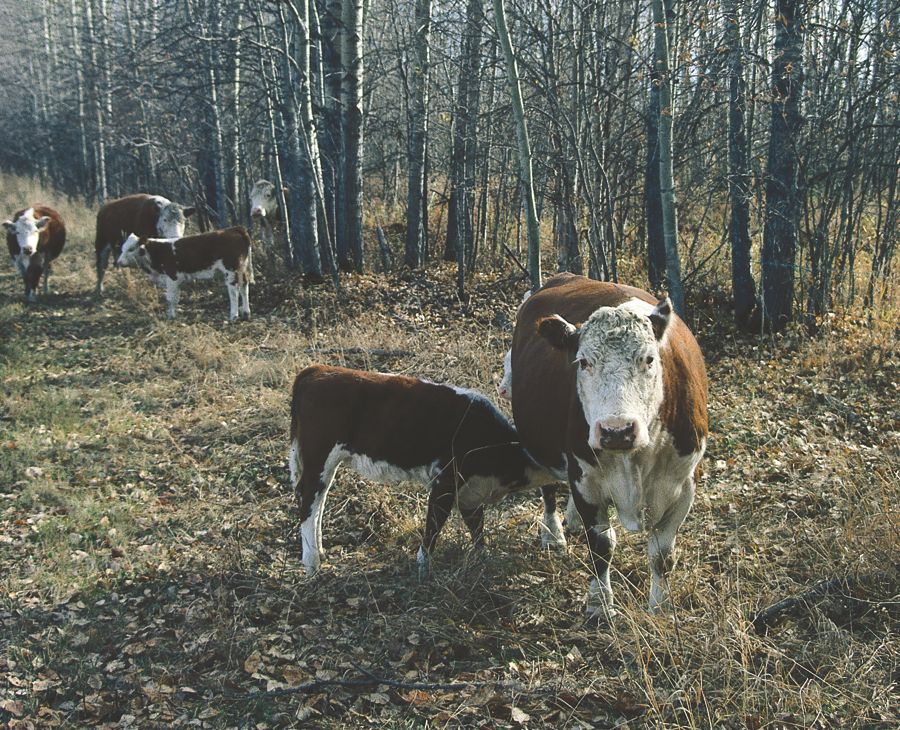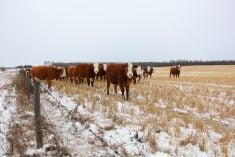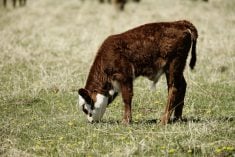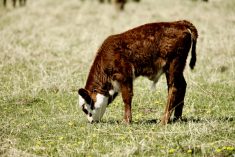NDSU Extension Service – As calving winds down and calves are settled with their mammas, the inevitable day will come when the calves need to get a round of vaccinations. It is much like the old days when the school made the announcement that the county nurse was coming along with a bag full of needles. Terror was struck within the elementary ranks, but all of us knew the inevitable was coming: a shot.
Not much thought was put into privacy because we were lined up in a long row. Each grimacing kid was in full view as what seemed to be a very large needle was slowly inserted into each arm. Occasionally someone would try to dart away, but always to no avail. He or she was brought back kicking and screaming. There was zero tolerance for nonvaccinates.
Read Also

Building demand together: The impact of Canada’s beef import levy
The beef import levy has become a central tool for ensuring balance in Canada’s beef industry
In hindsight, the program was exceptional and, with some maturing, we all came to understand the need for vaccinations. Perhaps with some improved child-handling techniques, the vaccination programs continue with full consent of their previously vaccinated parents.
An effective vaccination program is critical for the control of childhood diseases. Diphtheria, tetanus, pertussis, polio, measles, mumps, rubella, chickenpox, meningococcal disease, human papillomavirus, hepatitis A/B and other vaccines are available to ward off epidemic outbreaks.
A vaccination for influenza, the flu, is readily available. Although there are several strains of influenza, each flu season, the vaccine is offered to the general public and the public is strongly encouraged to get a vaccination. When is the last time one has even heard of an incidence of many of the ailments that we are vaccinated for? For most, news of these ailments is gone.
Effective vaccination programs within the human population essentially have eliminated the ailments or limited the outbreaks to very isolated cases.
- More from the Canadian Cattlemen: Spring reflections and calf deaths
Is not the same true for cattle? The goal is to eliminate or at least limit the causative agents of disease and build a natural immunity to those diseases. Therefore, outbreaks are limited to isolated cases, and the industry or the cattle population as a whole remains healthy.
Having a broad vaccination program builds immunity within the general population, which effectively limits the capacity of the agents of disease to spread. Viable hosts are limited, so with no host to spread the disease, the agent diminishes. Of course, proper management enables cattle to withstand the daily issues of maintaining health and vigor, but a properly prepared and challenged immune system is critical to total herd resistance to local pathogens.
The basic concept of immunity is relatively simple. The body reacts to foreign objects by developing defensive antibodies. In very simple terms, the antibody reminds me of the old game of Pac-Man, a computer game created in 1980 by Tohru Iwatani while working for Namco, a Japanese company. Pac-Man was a circular object with a large mouth and really had only one function, which was to catch and consume little dots.
Pac-Man would move up and down channels, not much different than our circulatory system (arteries or veins) and systematically remove all the dots. A large body chasing little dots is not that much different than in real life. We have the large “antibody” in the circulatory system chasing and eating small dotlike intruders.
The key to good health is to have the proper “Pac-Man” or “antibody” present within the living system to catch all the dots or invading bugs, such as viruses, bacteria or other foreign substances. Each antibody (immunoglobulin, if you like big words) is very specific, only consuming or catching one type of foreign bug. This process is called immunization and the reason calves need to be vaccinated.
All the vaccine does is prime the system so, some day, in the event of a real invasion, antibodies are ready to be called in to action. This priming vaccination generally is followed by a second booster vaccination to fine-tune the system into making very specific antibodies for each incoming foreign substance.
Now is the time to shop for the appropriate vaccination products to give your calves the best chance for survival in the real world. There are no guarantees, but the odds are better.
Effective vaccination programs within the human population essentially have eliminated many ailments and limited outbreaks.
Cannot the same be true for cattle?
















